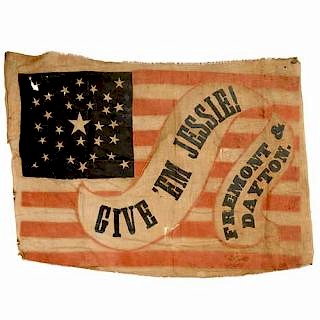Minnesota Massacre of 1862 CDVs
About Seller
6270 Este Ave.
Cincinnati , OH 45232
United States
With offices in Cincinnati, Cleveland and Denver, Cowan’s holds over 40 auctions each year, with annual sales exceeding $16M. We reach buyers around the globe, and take pride in our reputation for integrity, customer service and great results. A full-service house, Cowan’s Auctions specializes in Am...Read more
Two ways to bid:
- Leave a max absentee bid and the platform will bid on your behalf up to your maximum bid during the live auction.
- Bid live during the auction and your bids will be submitted real-time to the auctioneer.
Bid Increments
| Price | Bid Increment |
|---|---|
| $0 | $25 |
| $500 | $50 |
| $1,000 | $100 |
| $2,000 | $250 |
| $5,000 | $500 |
| $10,000 | $1,000 |
| $20,000 | $2,500 |
| $50,000 | $5,000 |
| $100,000 | $10,000 |
About Auction
Nov 18, 2016 - Nov 19, 2016
Cowan's Auctions dawnie@cowans.com
- Lot Description
Lot of 8 CDVs of either images or actors with a brief description of their involvement in the Minnesota Massacre of 1862. Includes the following portraits credited to Upton: Medicine Bottle, Little Six, Wo-We-Na-Pe, Sioux Prisoners (a woman and two children), two Sioux men. Plus, the following photos credited to Whitney: Cut Nose, Little Crow, and a huddled group from the mission party.
The Minnesota Massacre of 1862 resulted in the deaths of more than 450 settlers living near the reservation. Many white settlers came to help "civilize" the Sioux and establish an Indian school. Although the government offered over a million dollars to the tribe for their land, white merchants preyed upon the trade good dependent Sioux by granting massive amounts of credit which the merchants collected directly from the government. Tensions rose as many Sioux found themselves unable to provide for their families. One store attendant refused to take more credit and turned away starving women and children saying, "If they are hungry, they can eat grass" (Torrence, Time-Life The Old West Series, "The Minnesota Massacre: Sioux on the Warpath," p. 175). When the annual payment from the government failed to arrive on time in August of 1862, Wo-wi-na-pa, the son of Little Crow, and some other Dakota men led an attack against the white settlers. Among them was Little Six, the grandson of Shakopee and leader of the Mdewakanton band, and Medicine Bottle, the nephew of Chief Medicine Bottle. Little Six and Medicine Bottle fled to Canada after the massacre. Survivors found the harsh store owner dead with grass stuffed in his mouth.
In early December 1862, the military convicted 303 Sioux prisoners of murder and rape by military tribunals and sentenced them to death. Thirty-eight of the convicted hanged all at once, making it the largest hanging in American History. The military buried the bodies in mass graves but exhumed them because of high demand for cadavers. Dr. William Mayo received the body of "Stands on Clouds," also known as Cut Nose, and dissected it in front of his medical colleagues. He kept Cut Nose's skeleton in an iron kettle in his home office for years.
Medicine Bottle and Little Six evaded capture for almost two years until Major Edwin Hatch captured them in January of 1864. They were put on trial with Wo-wi-na-pa and charged with war crimes. Wo-wi-na-pa managed to escape the noose, but Little Six and Medicine Bottle did not. They hanged at Fort Snelling in 1865. The remaining prisoners stayed behind bars for more than four years. The military finally released them after more than one third died from disease. Cut Nose's body along with the identifiable remains of other American Indians exhumed after the hanging and "donated" to science were not returned for reburial until the late 20th century through the Native American Graves Protection and Repatriation Act. See also Lot 345.All are in good condition with some toning, some have inscriptions on the reverse.Condition
- Shipping Info
-
SHIPPING. At the request of the buyer, Cowan's will authorize the shipment of purchased items. Shipments usually occur within two weeks after payment has been received. Shipment is generally made via UPS Ground service. Unless buyer gives special instructions, the shipping method shall be at the sole discretion of Cowan's Auctions, Inc.. Cowan's is in no way responsible for the acts or omissions of independent handlers, packers or shippers of purchased items or for any loss, damage or delay from the packing or shipping of any property.
-
- Buyer's Premium



 EUR
EUR CAD
CAD AUD
AUD GBP
GBP MXN
MXN HKD
HKD CNY
CNY MYR
MYR SEK
SEK SGD
SGD CHF
CHF THB
THB












